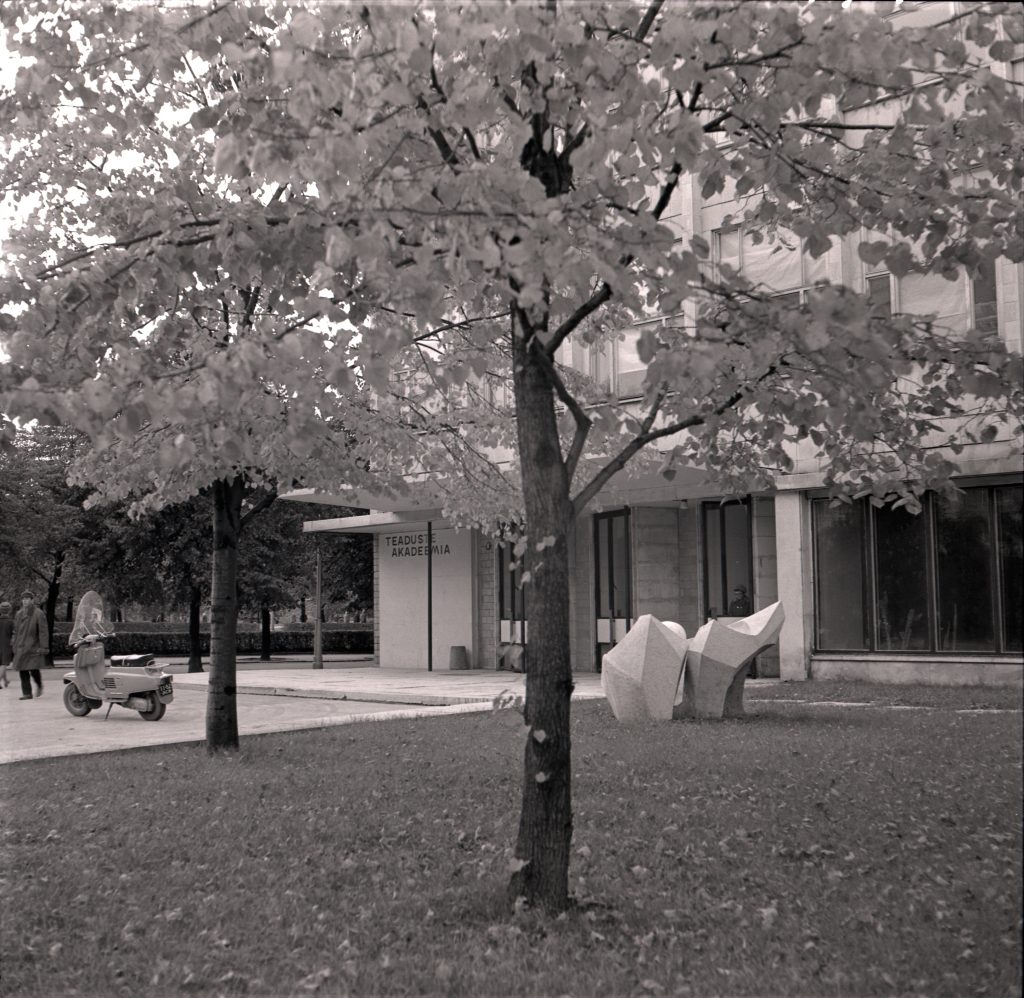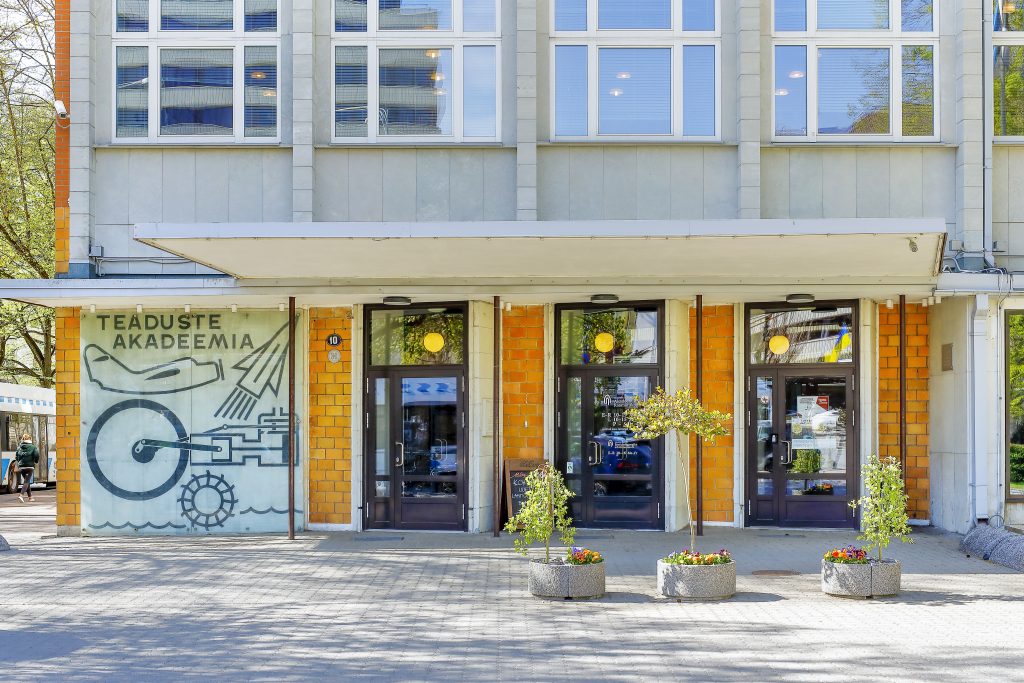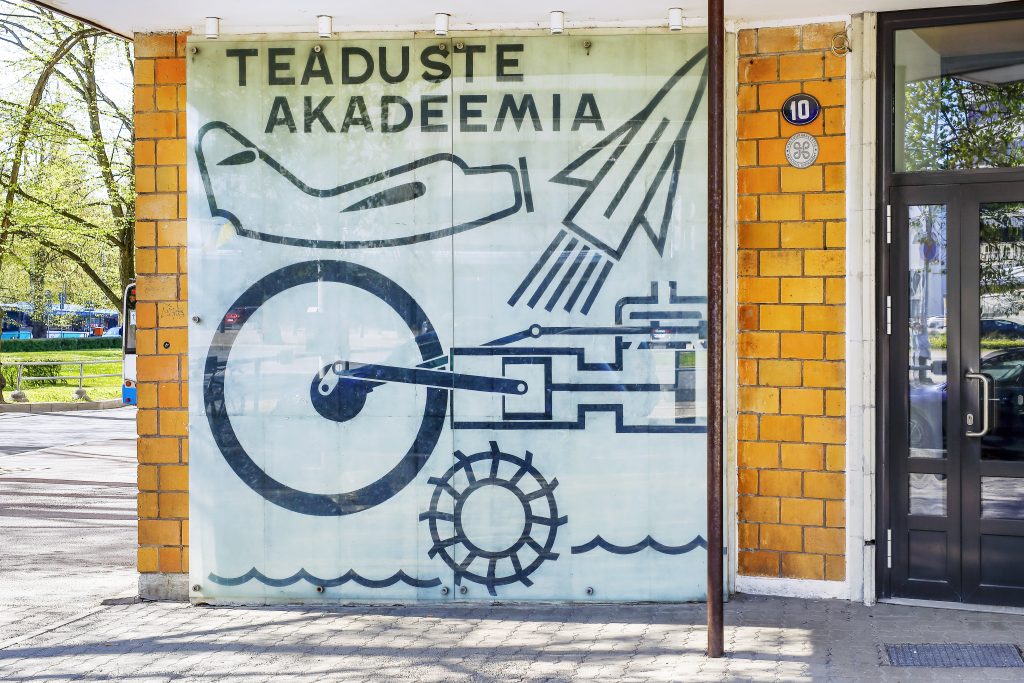Mural of the Academic Library of Tallinn University
1960s
The building of the Central Library of the Academy of Sciences of the Estonian SSR (now the Academic Library of Tallinn University) designed in 1957–1959 and completed in 1963 reflects technically slightly primitive and experimental aspirations towards modernity, characteristic to late 1950s and early 1960s. Orange end wall adds spice to the six-storey grey facade with large windows, lined with local dolomite from Saaremaa. Architects of the building are Uno Tölpus and Paul Madalik, interior designer was Leila Pärtelpoeg.
Sgraffito with restless composition beside the front door of the building with bold cover roof reflects characteristic intention of the period to synthesize different fields of art. There is also a sculpture on the green area in front of the building, and a ceramic mural indoors.
An especially characteristic feature of the period is depiction of a space rocket, which had important role in the Soviet iconography. It related to the first space flight in the world, completed in 1961 by Juri Gagarin. Such a triumph symbolized supremacy of the Soviet Union and socialism, progress and innovation, as well as aspiration of people constantly higher and further, to bright future. In the mural, the idea is even more reinforced with a plane. Other images include a waterwheel as a major historical invention, and an uncertain device resembling a road roller or a workbench. Thus, the images were not too much related to the fields investigated by Estonian scientists, but rather depicted contemporary technology in a stereotyped way. The composition has simple and straightforward style characteristic to 1960s, which was well suitable for political propaganda.
This work, which was typical to the period, but artistically modest, was probably covered with a plaster layer immediately after its completion and forgotten. Only the text „Academy of Sciences“, relating to modernistic architectural language, was left visible.




